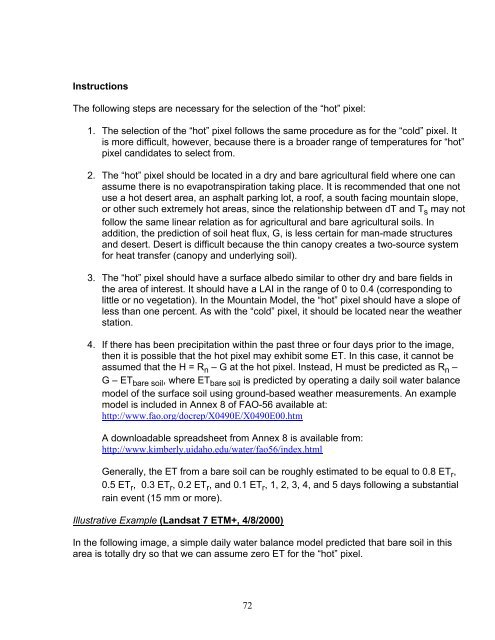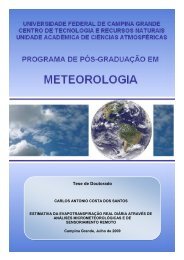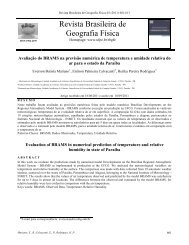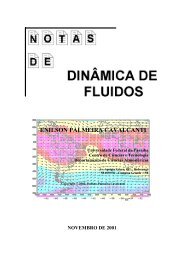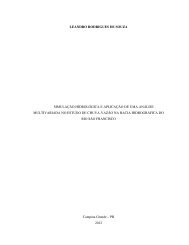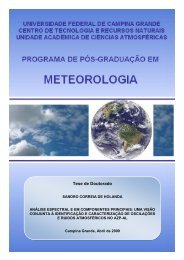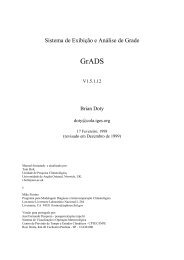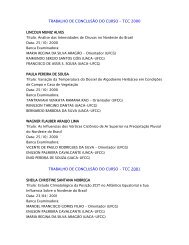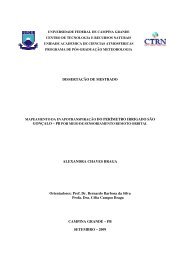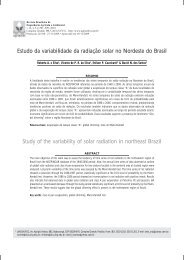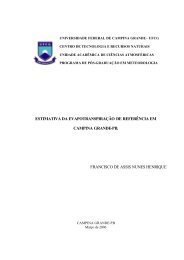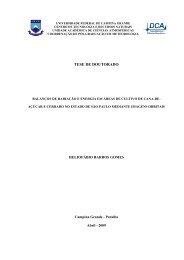Create successful ePaper yourself
Turn your PDF publications into a flip-book with our unique Google optimized e-Paper software.
InstructionsThe following steps are necessary for the selection of the “hot” pixel:1. The selection of the “hot” pixel follows the same proc<strong>edu</strong>re as for the “cold” pixel. Itis more difficult, however, because there is a <strong>br</strong>oader range of temperatures for “hot”pixel candidates to select from.2. The “hot” pixel should be located in a dry and bare agricultural field where one canassume there is no evapotranspiration taking place. It is recommended that one notuse a hot desert area, an asphalt parking lot, a roof, a south facing mountain slope,or other such extremely hot areas, since the relationship between dT and T s may notfollow the same linear relation as for agricultural and bare agricultural soils. Inaddition, the prediction of soil heat flux, G, is less certain for man-made structuresand desert. Desert is difficult because the thin canopy creates a two-source systemfor heat transfer (canopy and underlying soil).3. The “hot” pixel should have a surface albedo similar to other dry and bare fields inthe area of interest. It should have a LAI in the range of 0 to 0.4 (corresponding tolittle or no vegetation). In the Mountain Model, the “hot” pixel should have a slope ofless than one percent. As with the “cold” pixel, it should be located near the weatherstation.4. If there has been precipitation within the past three or four days prior to the image,then it is possible that the hot pixel may exhibit some ET. In this case, it cannot beassumed that the H = R n – G at the hot pixel. Instead, H must be predicted as R n –G – ET bare soil , where ET bare soil is predicted by operating a daily soil water balancemodel of the surface soil using ground-based weather measurements. An examplemodel is included in Annex 8 of FAO-56 available at:http://www.fao.org/docrep/X0490E/X0490E00.htmA downloadable spreadsheet from Annex 8 is available from:http://www.kimberly.uidaho.<strong>edu</strong>/water/fao56/index.htmlGenerally, the ET from a bare soil can be roughly estimated to be equal to 0.8 ET r ,0.5 ET r , 0.3 ET r , 0.2 ET r , and 0.1 ET r , 1, 2, 3, 4, and 5 days following a substantialrain event (15 mm or more).Illustrative Example (Landsat 7 ETM+, 4/8/2000)In the following image, a simple daily water balance model predicted that bare soil in thisarea is totally dry so that we can assume zero ET for the “hot” pixel.72


